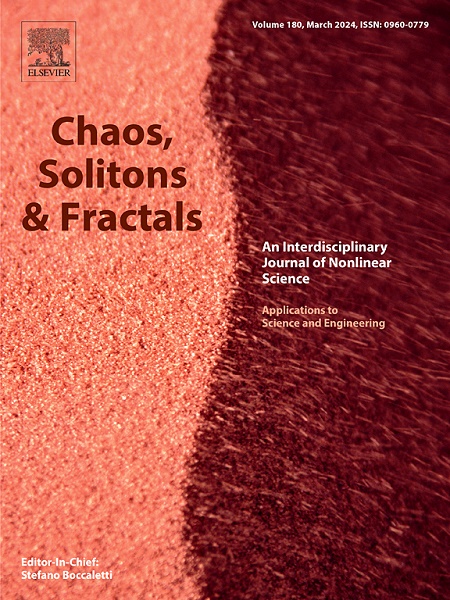设计混沌杨氏双缝实验优化启发式,用于识别关键项分离的非线性肌肉模型
IF 5.3
1区 数学
Q1 MATHEMATICS, INTERDISCIPLINARY APPLICATIONS
引用次数: 0
摘要
在这项工作中,通过整合十种不同的混沌图,引入了杨氏双缝实验(YDSE)优化器的新型变体,其性能得到了提高。集成以三种不同的方式进行,并提出了 YDSE 优化器的三十种混沌变体。对具有单模态和多模态特征的数学和 CEC 基准函数进行了分析。它还被进一步应用于电刺激肌肉模型,该模型是输入非线性哈默斯坦控制自回归模型的一般化,具有用于脊髓损伤患者的关键项分离。结果表明,混沌图增强了 YDSE 优化器的性能。更具体地说,在探索和利用机制中整合高斯图(M3CYDSE3)比其他变体更有效。详细的收敛分析、统计执行、复杂性分析和弗里德曼测试表明,M3CYDSE3在与人工电场算法(AEFA)、算术优化算法(AOA)、传播搜索算法(PSA)、粒子群优化算法(PSO)、正弦余弦算法(SCA)和YDSE优化器的比较中取得了最佳性能。本文章由计算机程序翻译,如有差异,请以英文原文为准。
Design of chaotic Young's double slit experiment optimization heuristics for identification of nonlinear muscle model with key term separation
In this work, a novel variant of Young's double slit experiment (YDSE) optimizer is introduced with improved performance by integrating ten different chaotic maps. The integration is performed in three different ways and thirty chaotic variants of YDSE optimizer are proposed. The analysis is performed on mathematical and CEC benchmark functions having unimodal and multimodal features. It is further applied to electrically stimulated muscle model which is generalization of input nonlinear Hammerstein controlled autoregressive model with key term separation used for patients with spinal cord injury. The results indicates that chaotic maps enhance the performance of YDSE optimizer. More specifically integration of Gauss map in both exploration and exploitation mechanisms (M3CYDSE3) is most effective than other variants. Detailed convergence analysis, statistical executions, complexity analysis and Freidman test show that M3CYDSE3 achieves best performance against artificial electric field algorithm (AEFA), arithmetic optimization algorithm (AOA), propagation search algorithm (PSA), particle swarm optimization (PSO), sine cosine algorithm (SCA), and YDSE optimizer.
求助全文
通过发布文献求助,成功后即可免费获取论文全文。
去求助
来源期刊

Chaos Solitons & Fractals
物理-数学跨学科应用
CiteScore
13.20
自引率
10.30%
发文量
1087
审稿时长
9 months
期刊介绍:
Chaos, Solitons & Fractals strives to establish itself as a premier journal in the interdisciplinary realm of Nonlinear Science, Non-equilibrium, and Complex Phenomena. It welcomes submissions covering a broad spectrum of topics within this field, including dynamics, non-equilibrium processes in physics, chemistry, and geophysics, complex matter and networks, mathematical models, computational biology, applications to quantum and mesoscopic phenomena, fluctuations and random processes, self-organization, and social phenomena.
 求助内容:
求助内容: 应助结果提醒方式:
应助结果提醒方式:


